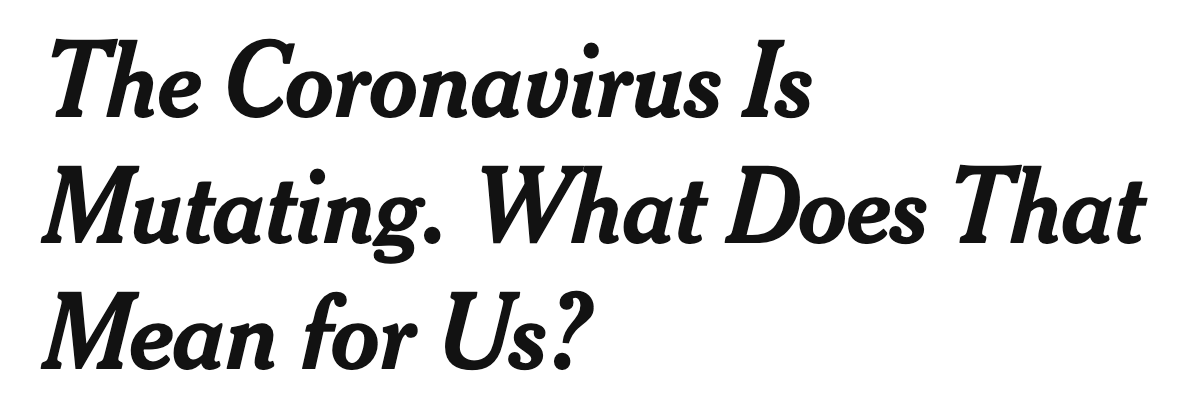Interpreting the evolution
of SARS-CoV-2
Jesse Bloom
Fred Hutch Cancer Research Center / HHMI
Slides at https://slides.com/jbloom/anticipatory-sars-cov-2
We can characterize evolution of genotype at high resolution
Phylogenetic tree of 434,167 full-length SARS-CoV-2 genomes provided by GISAID

We want to know how changes in genotype affect phenotype


Prospectively map how each mutation affects phenotype
Impossible to measure true viral fitness in the lab, so we focus on biochemical phenotypes that contribute to fitness. For RBD:
1) Does RBD fold properly?
2) Does RBD bind ACE2 with high affinity?
3) Is RBD bound by anti-viral antibodies?
Impossible to measure true viral fitness in the lab, so we focus on biochemical phenotypes that contribute to fitness. For RBD:
1) Does RBD fold properly?
2) Does RBD bind ACE2 with high affinity?
3) Is RBD bound by anti-viral antibodies?
Evolutionary pressure is to maintain these two phenotypes...
... while changing this phenotype.
Prospectively map how each mutation affects phenotype
We use yeast display to enable high-throughput experiments

RBD
fluorescent ACE2
yeast
fluorescent tag on RBD
Phenotypic maps of how mutations affect RBD folding & ACE2 affinity
We can similarly map how all RBD mutations affect binding by human sera
Maps for four individuals; for more see

The maps define main epitopes as receptor-binding ridge and secondarily 443-450 loop

Most important site is E484, which is mutated in 501Y.V2 and 501Y.V3 lineages

501Y.V2 also known as B.1.351, originally identified in South Africa.
501Y.V3 also known as P1, originally identified in Brazil.
How do we make these and other experiments actionable?
Currently we are reactive
- New viral lineage is identified and starts to rise in frequency.
- Labs rush to obtain virus and characterize it.
- Six weeks later, we get a bunch of Nature papers.
Complete mutational scanning of biochemical phenotypes
Pseudotype virus escape selections and neutralization assays
Live virus escape selections and neutralization assays
To be prospective, we need to characterize effects of mutations ahead of time
Increasing "authenticity"
Increasing throughput
We don't need to predict, we just need to get better at interpreting
E484K was first observed in sequenced isolates in March of 2020 (three times!). If we'd had a good phenotypic lookup table, that would have been plenty of time to move up the hierarchy of experimental authenticity and start preparing.